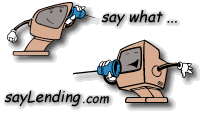 |
|||||||||||||||||||||||||||||||||||||||||||||||||||||||||||||||||||||||||
Why Refinance Your Home:Refinance to Get a Better Rate |
|||||||||||||||||||||||||||||||||||||||||||||||||||||||||||||||||||||||||
To Find a Better Rate
What Are Refinancing Costs?
Many lenders will tack closing costs onto your loan request so that you will have zero out-of-pocket costs associated with home refinancing
|
|||||||||||||||||||||||||||||||||||||||||||||||||||||||||||||||||||||||||
Why Refinance Your Home:Refinance to Get Into a Stable Product |
|||||||||||||||||||||||||||||||||||||||||||||||||||||||||||||||||||||||||
Many homeowners are refinancing to get into a more stable, fixed rate mortgage loan
For Those with Payment-Risk Loans
|
|||||||||||||||||||||||||||||||||||||||||||||||||||||||||||||||||||||||||
Why Refinance Your Home:Refinance to Get Better Repayment Terms |
|||||||||||||||||||||||||||||||||||||||||||||||||||||||||||||||||||||||||
Some homeowners will refinance to lower their repayment terms from 30-year to 15-year or lower
Consider pre-paying your mortgage instead:
The pre-pay benefit depends on the rate and closing costs
You might consider our FAST mortgage payoff program
|
|||||||||||||||||||||||||||||||||||||||||||||||||||||||||||||||||||||||||
Why Refinance Your Home:Refinance to Get Cash Out |
|||||||||||||||||||||||||||||||||||||||||||||||||||||||||||||||||||||||||
Many homeowners will refinance to get cash out
Example of cash out amounts
You can borrow more than 80% LTV
Another option to consider is a home equity loan
|
|||||||||||||||||||||||||||||||||||||||||||||||||||||||||||||||||||||||||
 |